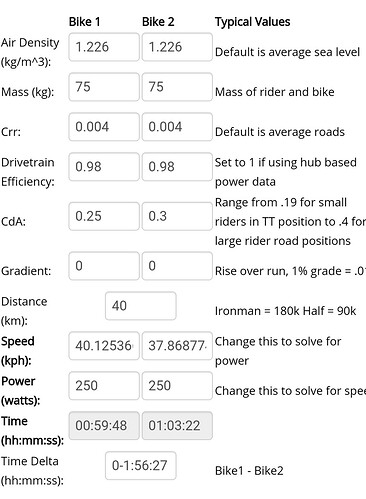There is so much wrong about that sentence, where to start, are you saying it’s a good helmet?
Not an Anchorman fan then?
I am not sure, just grappling with the concept of aero helmets and sex panthers on the same website
Edit: ah, ok, just googled it and see it’s probably a cultural reference rather than a personal predilection. Probably.
60% of the time, works every time.

Smells like Big Foot’s dick
Smells like a turd covered in burnt hair
Regarding the D.I.Y rear disc.
Is it generally accepted that the rear disc wheel is the best ( fastest ) option?
Even for those averaging under 20 mph?
Worth more to them.
Yes, there is no magical cut-off speed where they do or don’t work. In fact slower riders can gain more in terms of time as they are out longer to receive those gains.
I hear this in my LBS all the time. I am sorry but I really don’t agree.
Yes, aero gains are real at all speeds, but as air resistance is cubed relative to the speed travelled it becomes vastly more important the faster you go.
It becomes more important in terms of pure watts saved but the numbers don’t lie and a slower rider will gain as much as a faster one in terms of time over a given distance. (And can be more)
Whether it’s important to you and your goals is a separate argument, 5mins to someone trying to KQ might be massive, to someone doing 15hrs maybe less so. (Although 16:58 or 17:03 could be big)
Do the maths with conservative estimates and I’ll believe you.
Link to a blog site that has a vested interest in selling aero to everyone and I won’t.
Two people have stated that slower riders gain equal/more time and you’ve disputed that with nothing to support it other than you don’t believe it.
Here’s another link but I’m not going to do your research for you, how about you post something supporting your position, I’m done.
But it’s really not difficult to show it at all, the calculations are complicated to do by hand but as long as you agree that a disc does reduce your CdA in all circumstances (this is a much easier argument than front wheels where different yaw can change the aerodynamic properties) then you simply need to show that you go faster at lower CdA’s:
So using e.g.
https://www.gribble.org/cycling/power_v_speed.html
The default weight etc. rider manages to go 25.44 kph at 100watts, reduce the CdA by 0.01 (from 0.63 to 0.62) and it goes 25.56 kph.
180km at the first speed is 7:04 and at the second 7:02, 2 minutes saved from a very small reduction in aerodynamics, now of course we can argue about how much the disk reduces, but that any reduction helps the faster rider is sound (I think it’ll be more than 0.01 there, but we’ll go super conservative)
Now giving the rider 300 watts, same tiny improvement and only 1.5 minutes saved, despite it now being a 4 1/2 hour ride rather than a 7 hour one. The slower rider has saved more time, how valuable that time is as @JaRok2300 says, dependent on your goals.
Not an engineer, but think both can be right & will hazard a shot at trying to give an example.
Air resistance is the largest factor to consider and is proportional to the square of rider velicity. But not the only factor. There’s rolling resistance, the friction of the drive train of the bike etc so I expect the maths are really complex
Luckily there are websites like aeroweenies to crunch the maths. If you trust them, they come up with something like this:
So your faster rider, producing 250W, aero-blings their bike reducing coefficient of drag from 0.3 to 0.25. everything else stays the same. The result should be that their 40km time drops from 63:22 to 59:48, a reduction of 3:34 or 5.6%
For the slower rider putting out 150W:
… Doing the same calcs, the time taken drops by 4:14 or 5.5%
So the faster rider gains more in percentage terms, but the slower rider gains more in terms of seconds saved.
I think. Maybe a proper engineer will explain better.
One thing is for certain though, typing this stuff into my phone isn’t making me any faster and the sun is shining, so 

Whoops sorry cross post with @JibberJim ,wasn’t implying he’s not a proper engineer  think he genuinely may be ?!
think he genuinely may be ?!
(Also the delta numbers in the final row on the aeroweenies output look glitchy, I think it’s trying to output a negative in hh:mm:ss & coming out with something strange)
Not remotely an engineer!
A classic error
if (number<10) add “0” before it so it looks like “01:10:10” that breaks when number is less than 0.
Then the argument is.
Slower rider = less percentage improvement, but that lesser improvement is over a longer time so the net gain is potentially greater.
Guess that makes perfect sense.
Sorry, hadn’t had my coffee this morning and was fasted grumpy.
What I should have extrapolated is that, imho, % saved is all that counts.
So, yes of course if you take long enough to do something, and save a tiny %, then eventually you will save more as an absolute than taking 1/3rd the time and saving a significant %.
So yes, all aero gains count, but really they are only going to have a noteworthy % impact on your performance at higher speeds.

